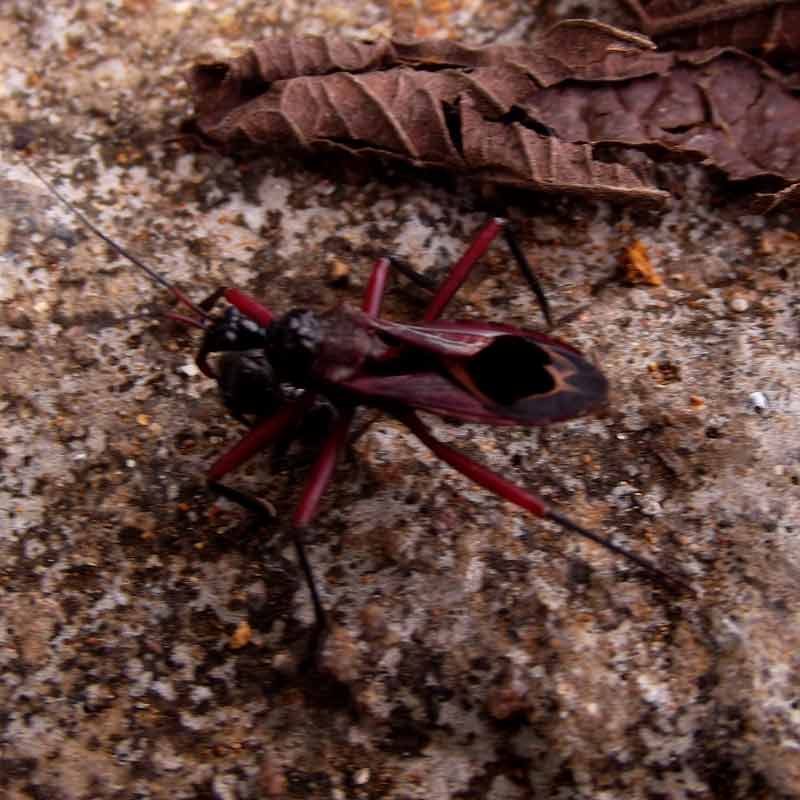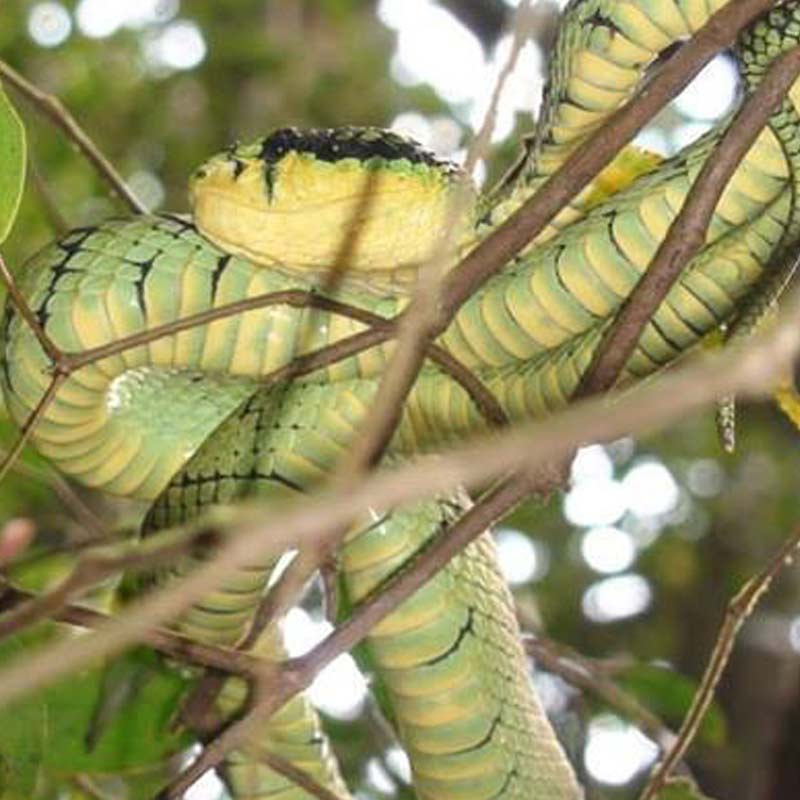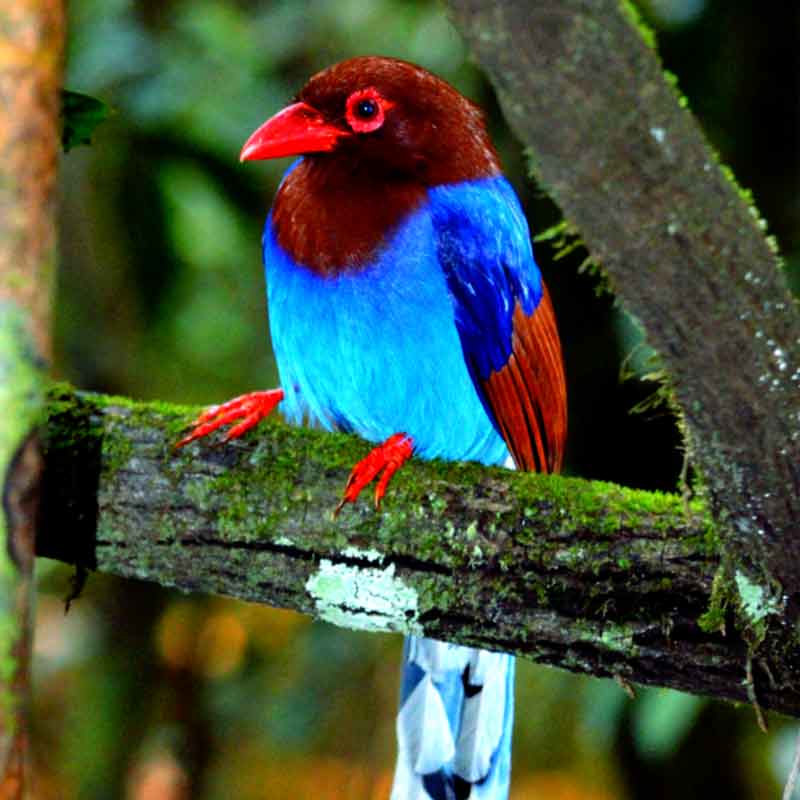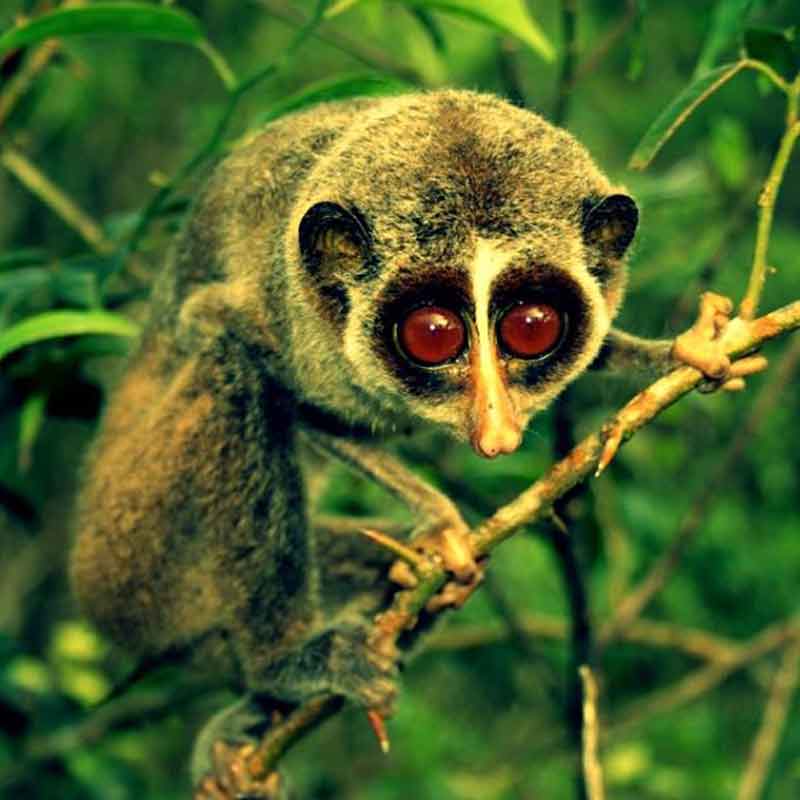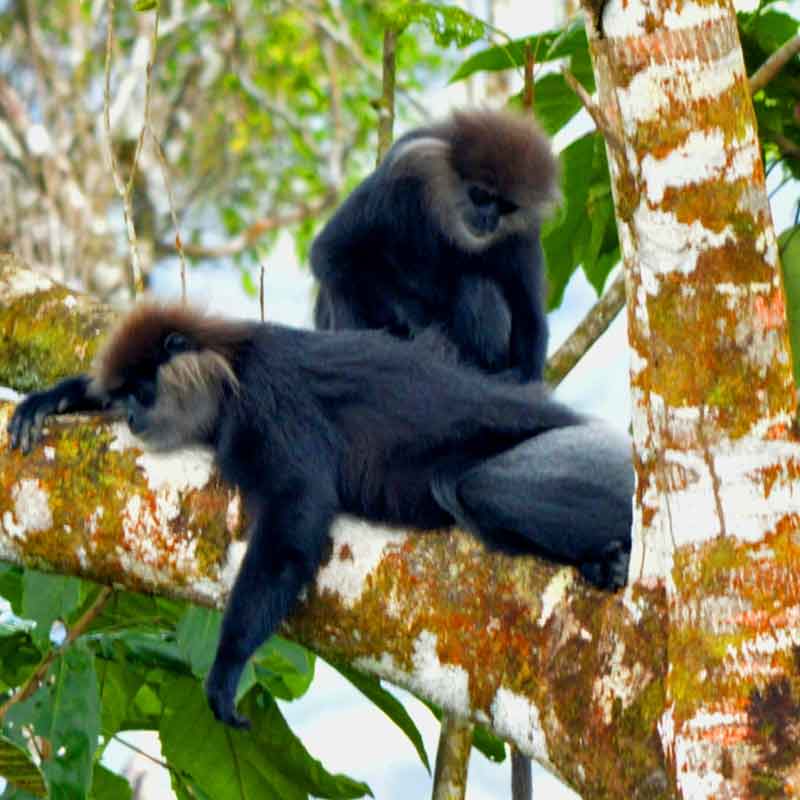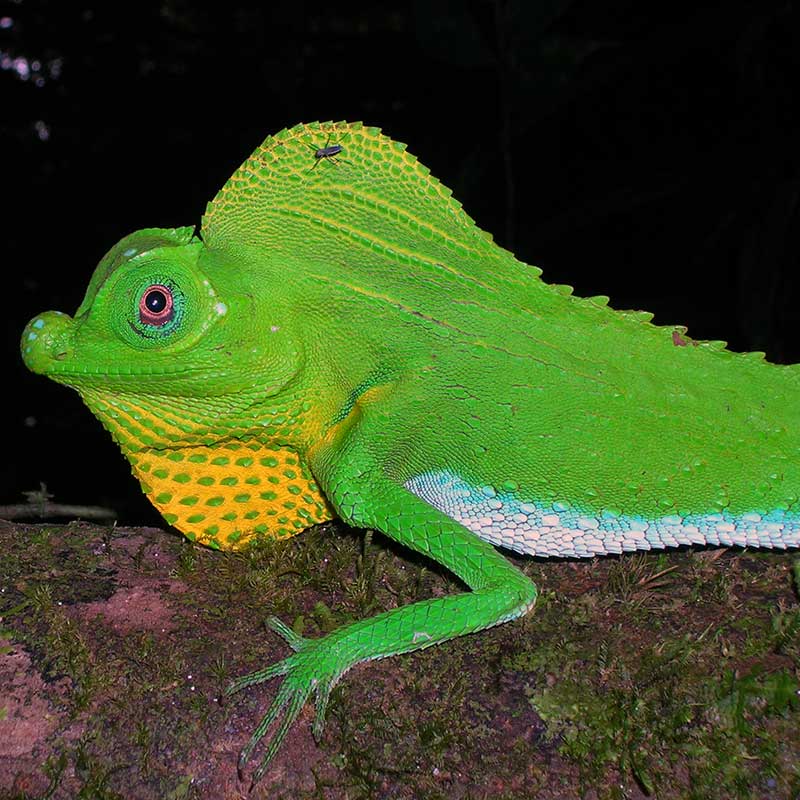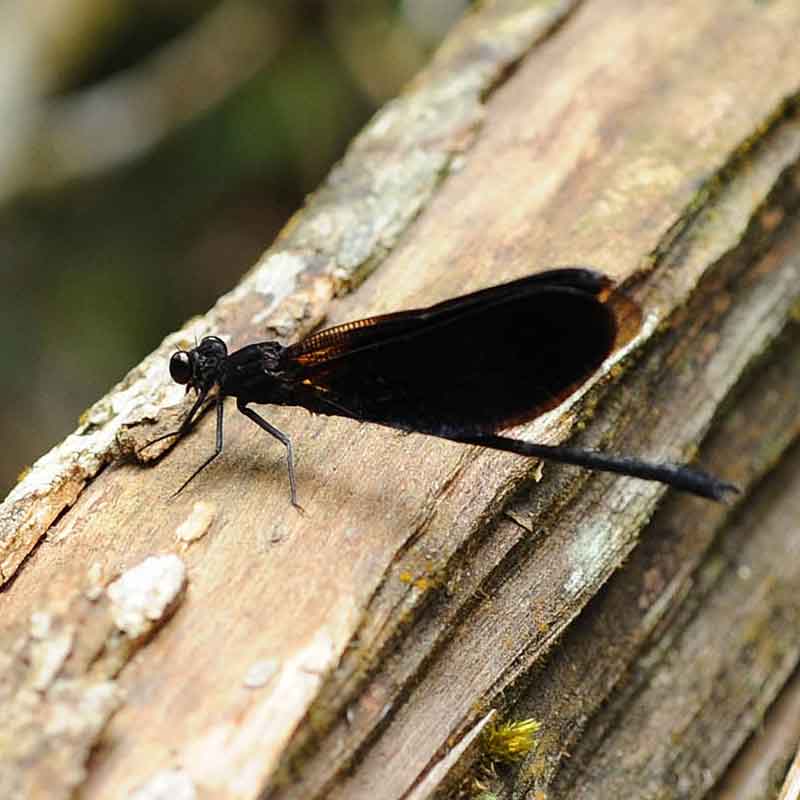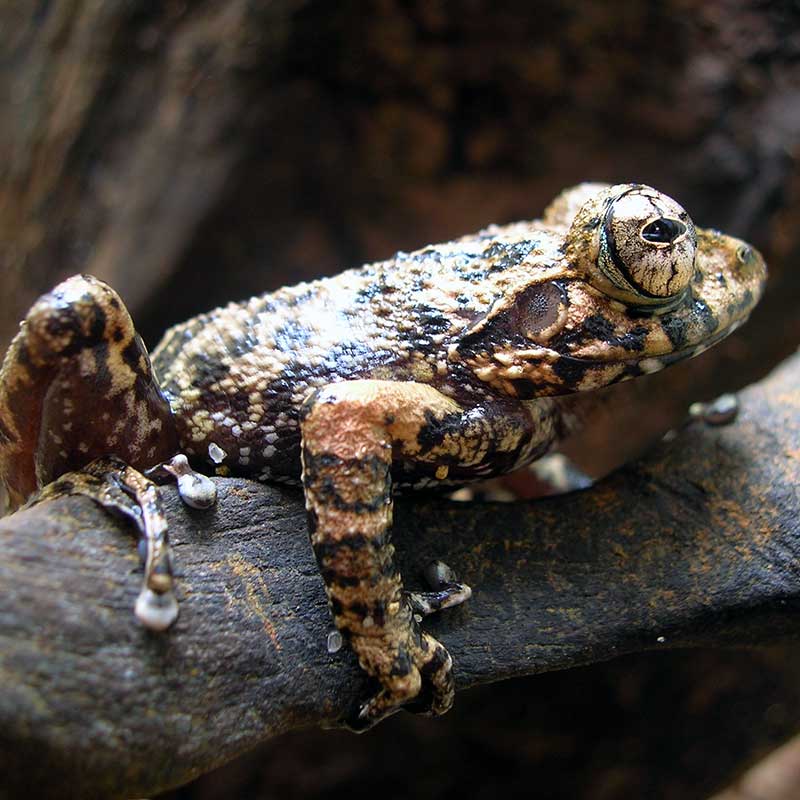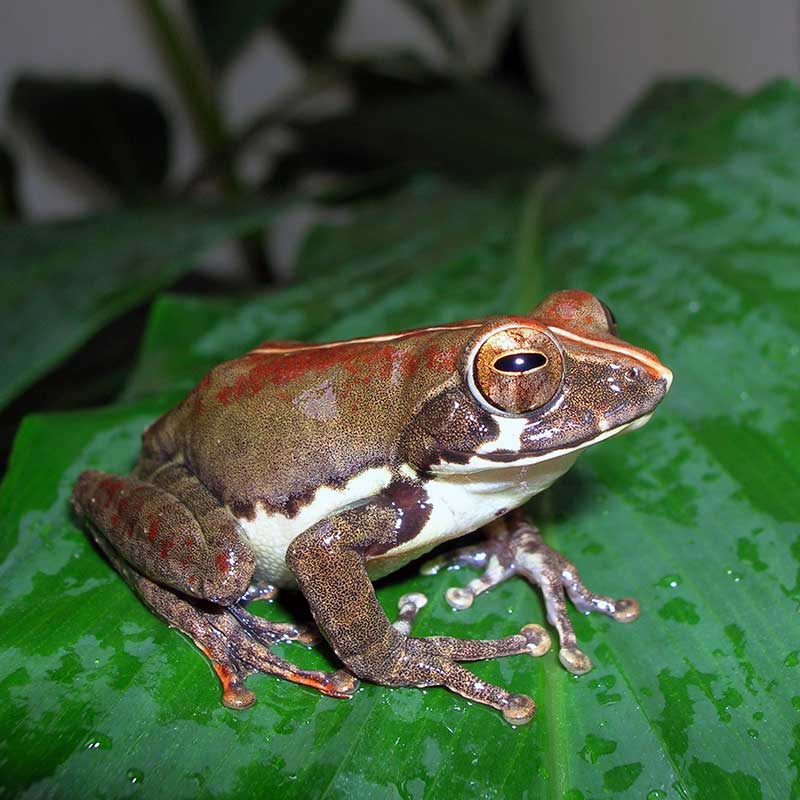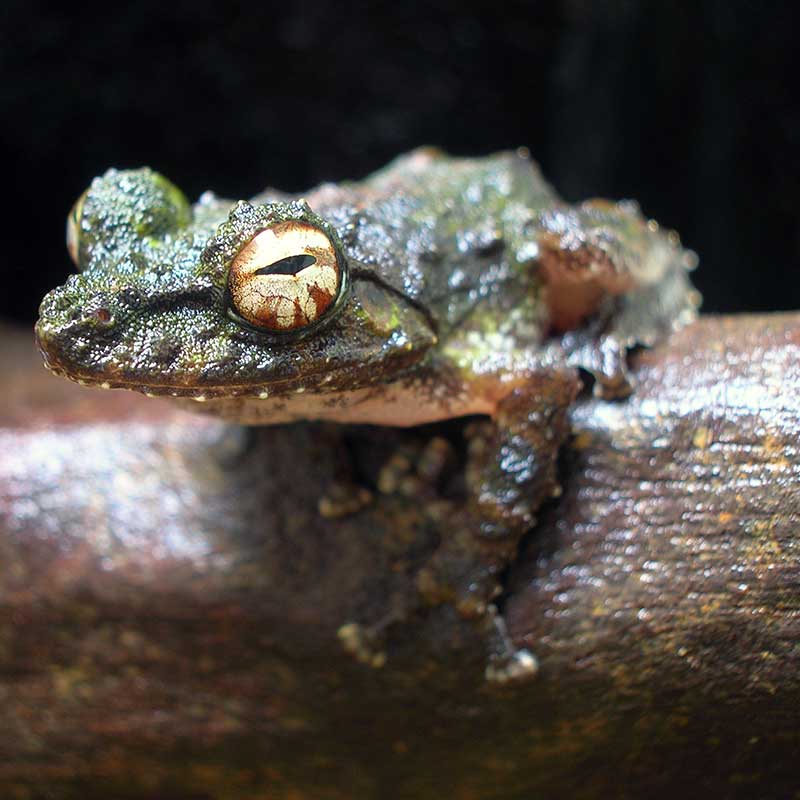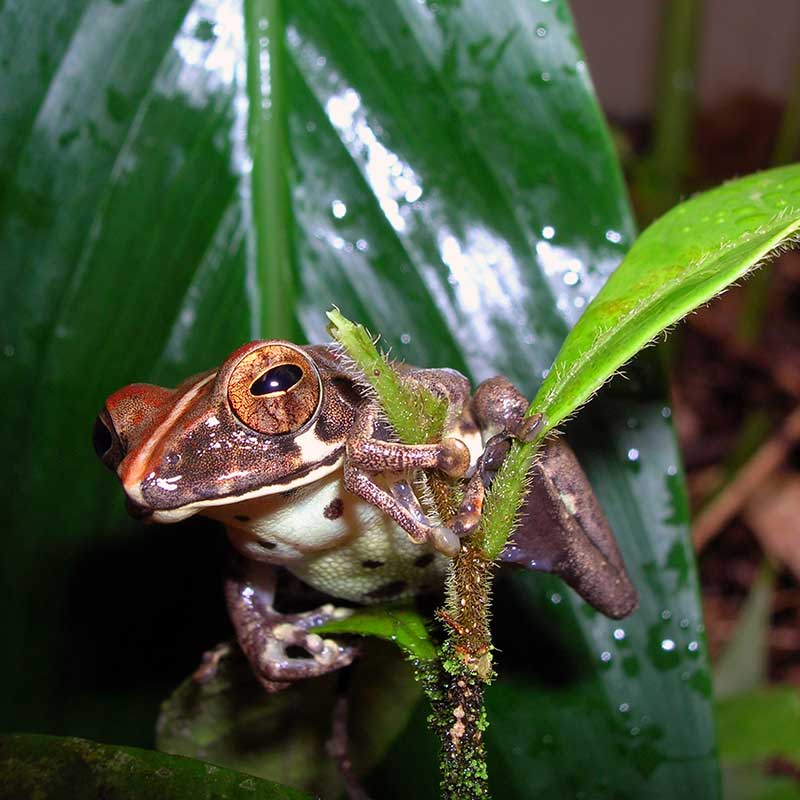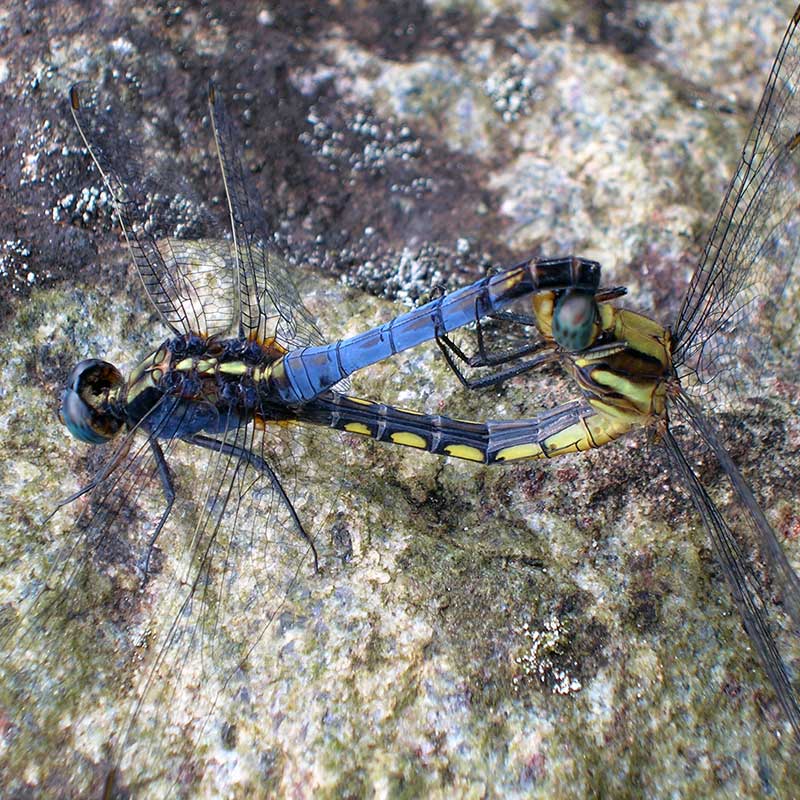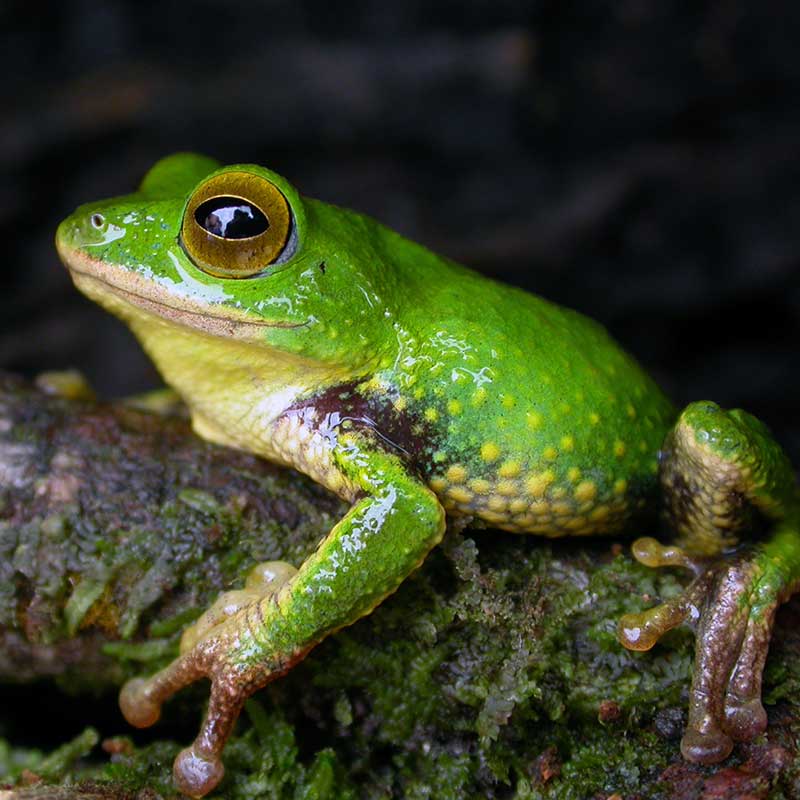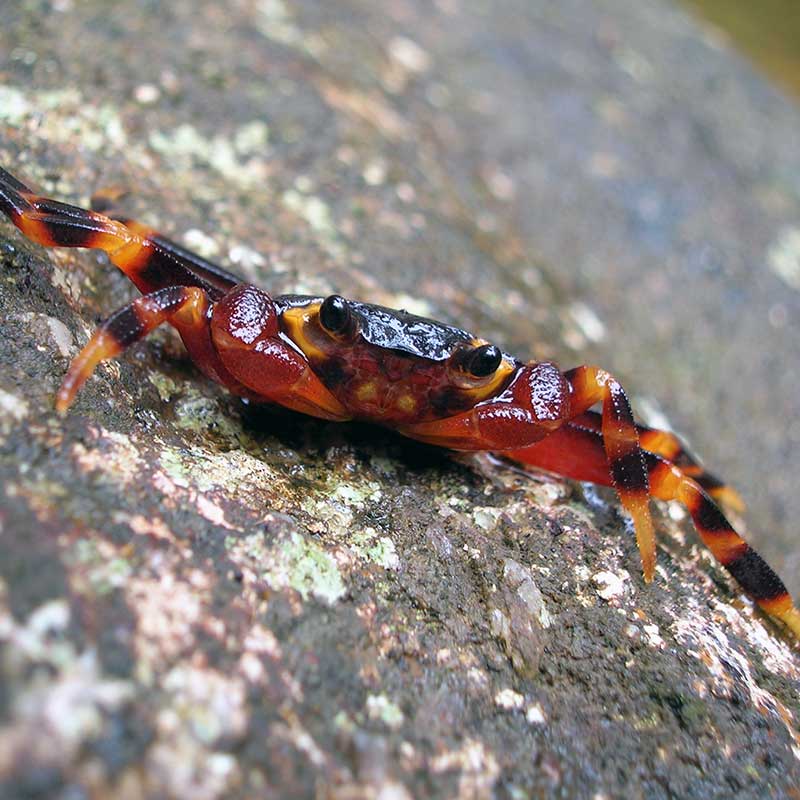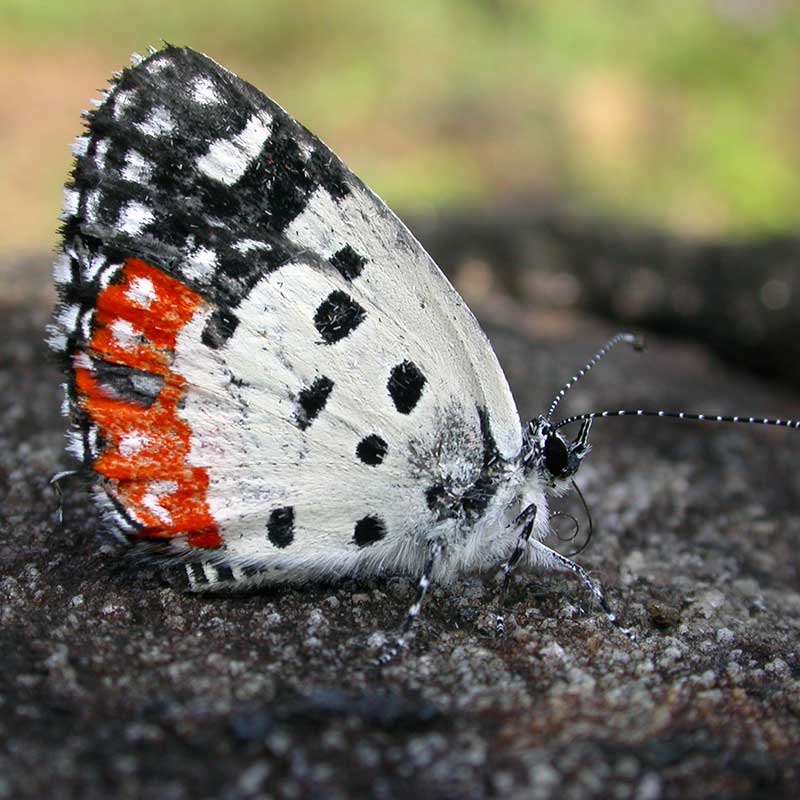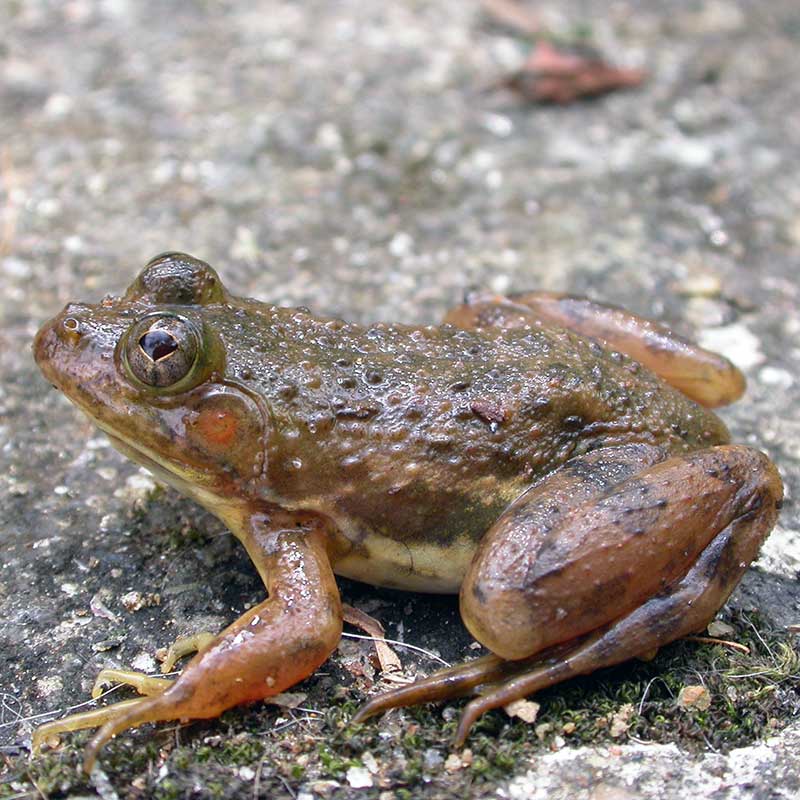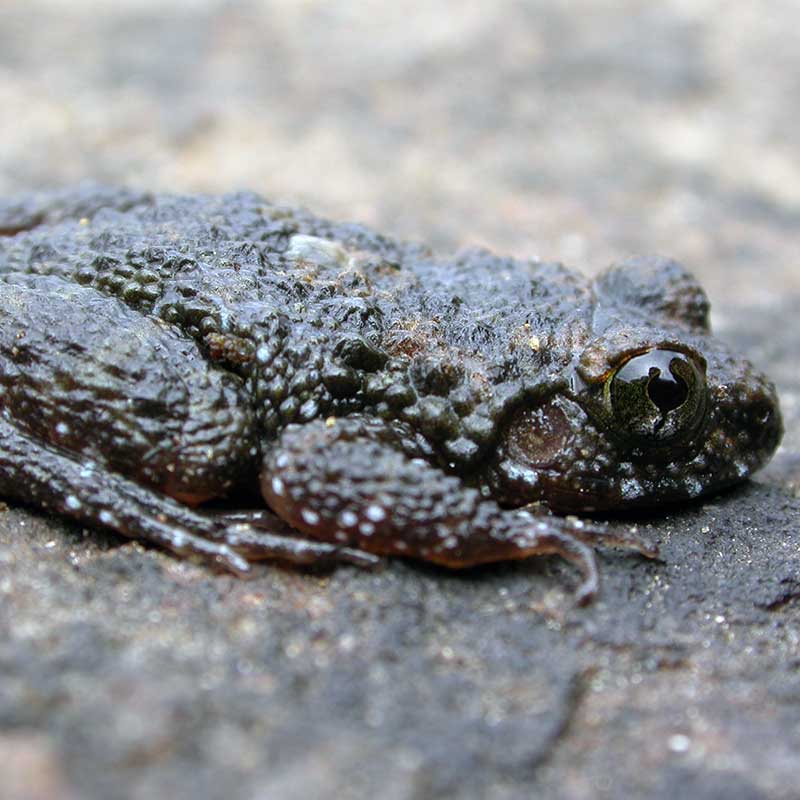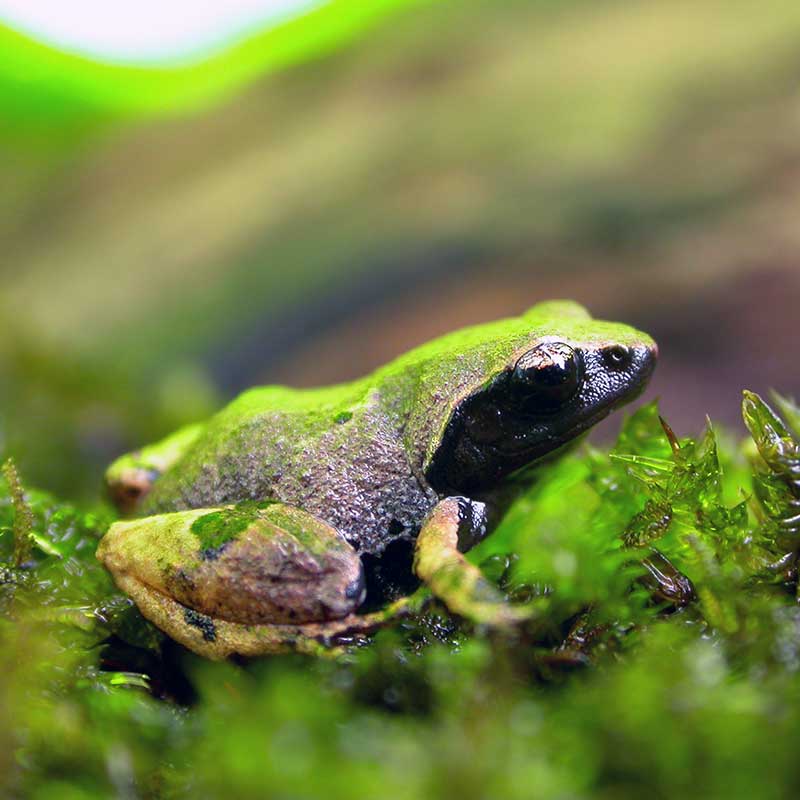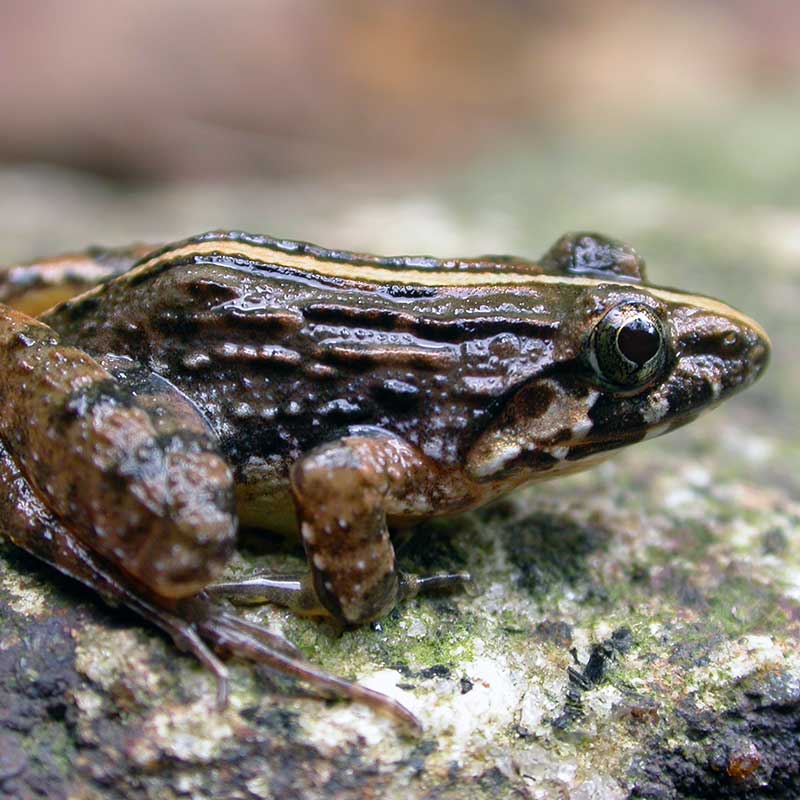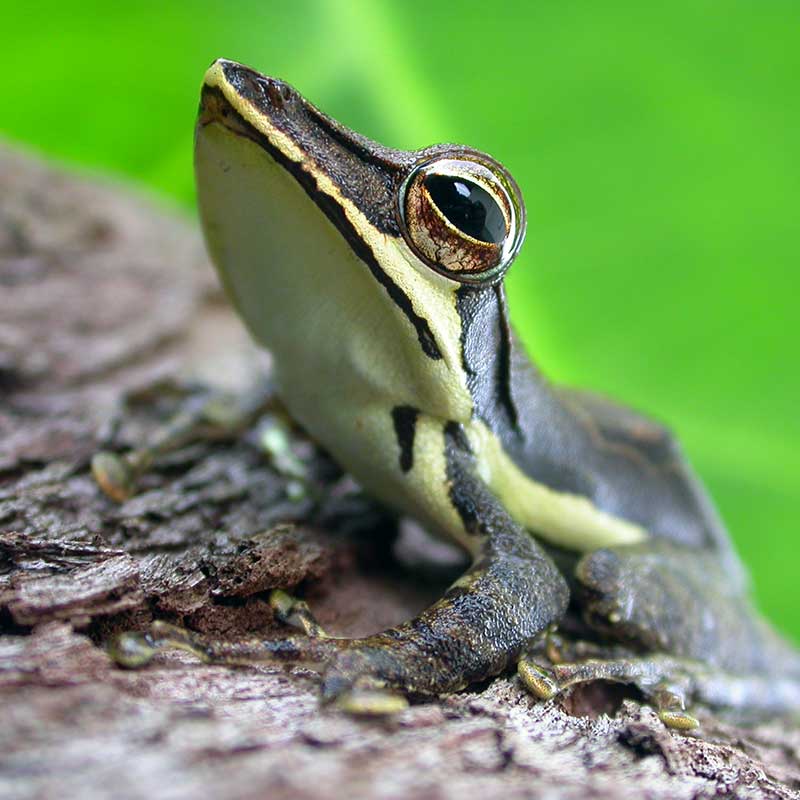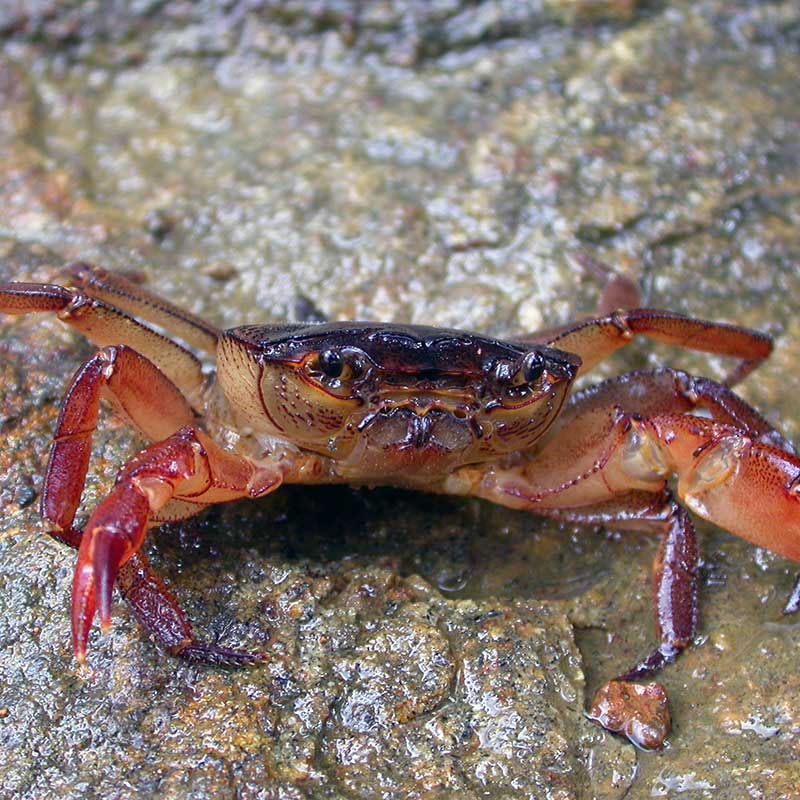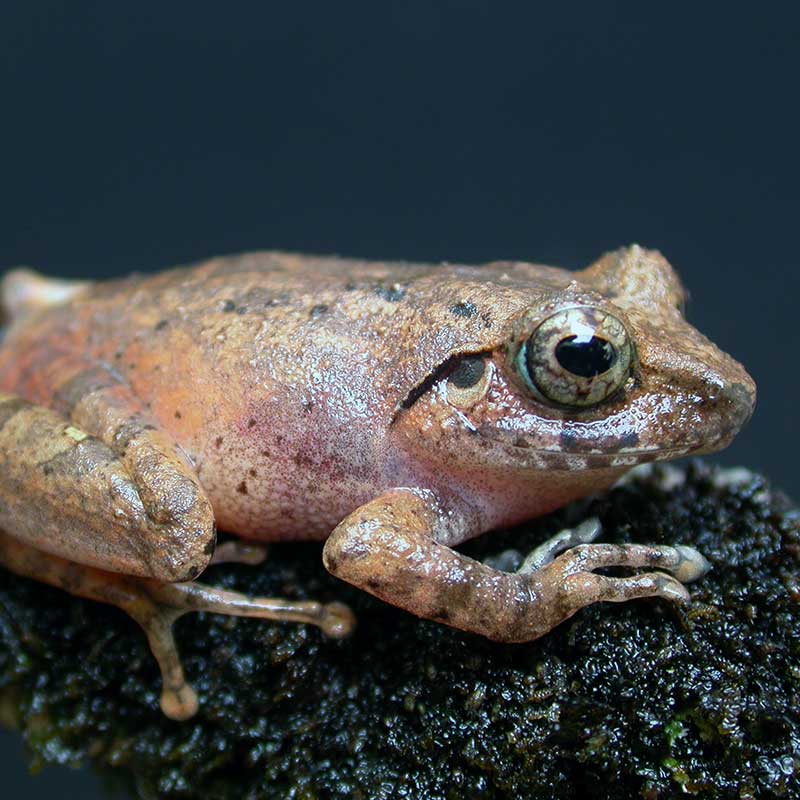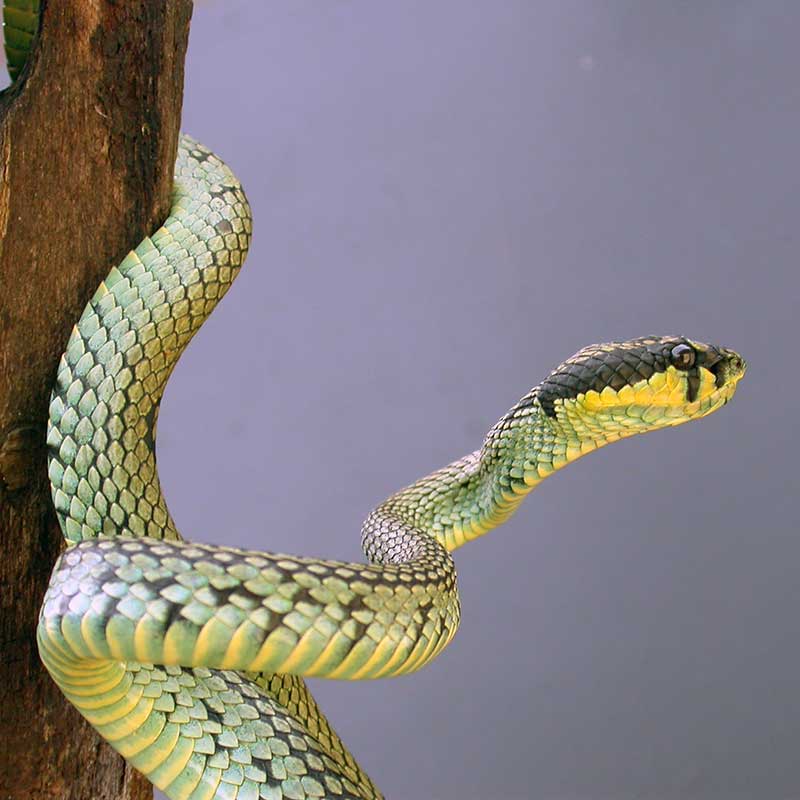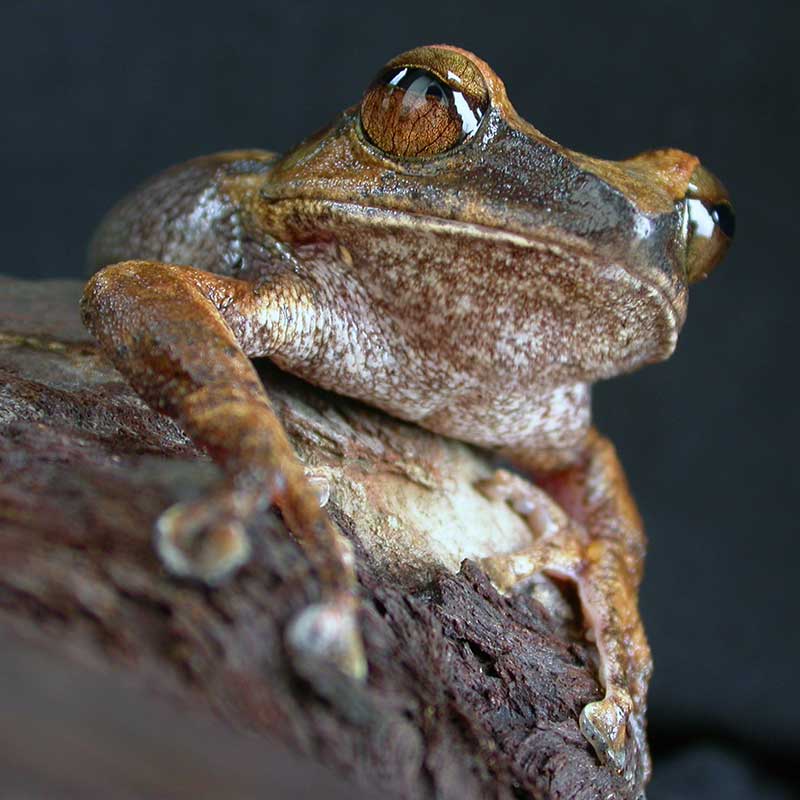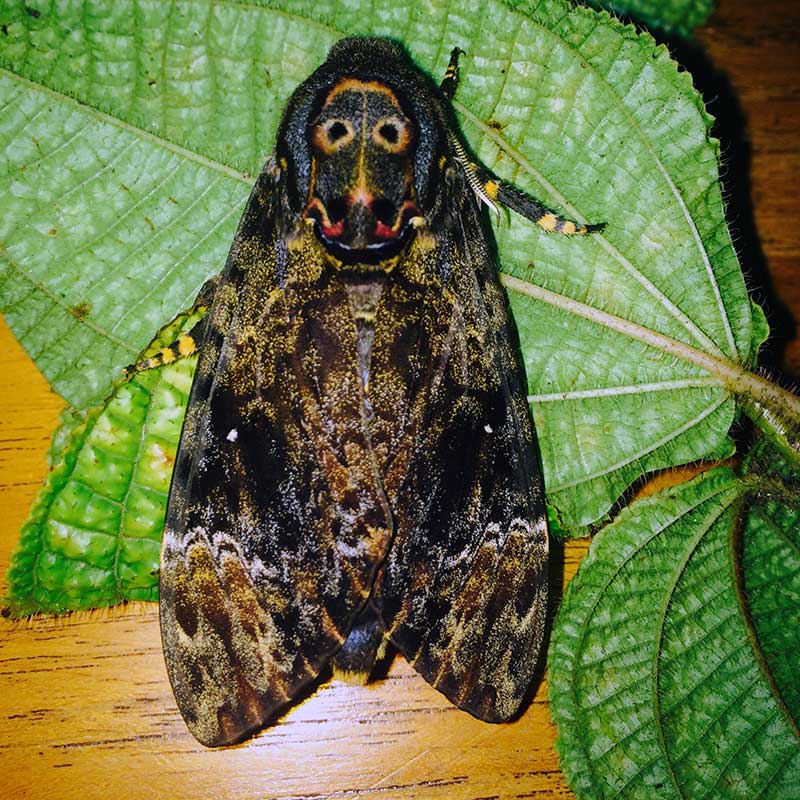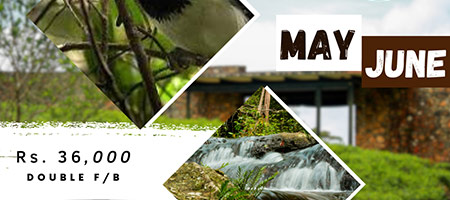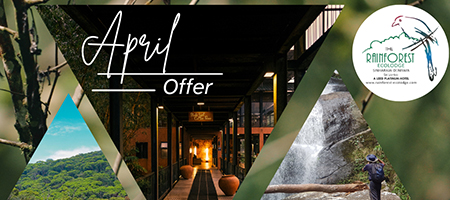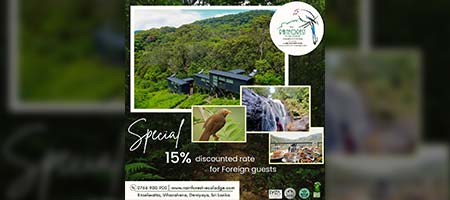Land Snails
Sri Lanka has a rich land-snail fauna and approximately 300 different species have been recorded so far. As the land snail diversity of many parts of the country still to be explored, this number could increase as the research work expands. Most of them occur in the natural forest; the rainforests of the wet zone contain 76% of the species. The fragmentation and loss of the habitat is the greatest threat encountered by the land-snails in Sri Lanka.
The land-snail fauna of sinharaja forest is mostly composed of endemic and native species and only a few exotic species observed in the surrounding non- forest and cultivated habitats.
Spiders
Many fear spiders considering them venomous, hence do not get much public sympathy and attention. They are one of the least understood members in the animal world. Around 43,000 spiders species have been identified so far. Though almost all spiders produce venom, they usually do not bite human, even so it’s done, that’s only for self-defense. Only handful produce venom that could harm humans.
According to the recent literature more than 501 species of spiders belonging 47 families have been recorded from Sri Lanka so far.
Spiders catch their prey by using a sticky web, a wonder of natural architecture. Different families have their own unique web patterns. Once a prey is caught in the web it is immobilized in two ways- by biting and injecting venom into the body of the prey to paralyze it and by wrapping the prey in a silk swathing.
At present most spider species are threatened with extinction. Habitat loss; unplanned urban development a resulting in degradation and fragmentation of natural habitat is the primary reason. Pollution by pesticides and use of chemical fertilizer too affect them negatively.
Some spiders have become accustomed to live in houses where their webs become a nuisance to the inhabitants. However, spiders can be useful animals to humans as they predate on flies and other insect vectors and thereby control spreading of diseases.
Agamides
The agamids are an important group of Sinharaja ecosystem. Hump Snout Lizard (Lyriocephalus scutatus), Sri Lanka’s largest endemic agamid, with the characteristic knob on the top of its nose is considered one of the most spectacular of the world. It can change its body color from cinnamon brown to green, depending on the surroundings and its mood. The defensive posture of this species is the display of the deep red colour of the mouth.
Green Garden Lizard (Calotes calotes) is one of the largest agamids in the country. It usually lives on the trees and found in both forest and other habitats such as home gardens, plantations, etc.
Sri Lankan Kangaroo Lizard (Otocryptis wiegmanni) is a small, ground dwelling lizard endemic to Sri Lanka. Colour ranges from dark reddish brown to dull brown. It can commonly seen in the leaf litter of shady rain forests, particularly if in the vicinity of forest streams. When threatened, it sometimes run bipedally, and even attempt to climb trees.
Snakes
The snake fauna of Sri Lanka is highly diverse and it consists of representatives of world’s most primitive snakes to the so called ‘modern snakes’ (e.g. vipers). Sinharaja area is home to four relict snake genera, Aspidura, Balanophis, Cercaspis and Haplocerus, which makes it unique.
Usually snakes are active during the day, often basking in sunlight. However the green pit viper (Trimeresurus trigonocephalus) is a nocturnal snake thus the best time to observe this beautiful snake is from around 19.00 — 22.00 hrs on low vegetation and tree trunks.
Birds
Sinharaja world heritage site spreads over wide elevation range (300m – 1100m). It is rich in bird life with an impressive 147 species recorded to date. It is also the only location where 21 out of 26 bird species endemic to Sri Lanka may be viewed. The Rainforest Ecolodge is ideally located at the 1025m elevation having both lowland and the highland species present in Sinharaja in its vicinity. A few endemic and other species thought to be confined to the hill zone i.e. the Sri Lanka White-eye (Zosterops ceylonensis), the Scaly Thrush (Zoothera dauma), the Wood Pigeon (Columba torrigtoni), the Dusky Blue Flycatcher (Muscicapa Sordid) and the Yellow-eared Bulbul (Pycnonotus penicillatus), have also been sighted at this area.




